How Much Reading Comprehension Growth Should a Special Ed Student Make in a Year's Time
Can reading practise aid transform struggling readers into successful readers? And past doing and then, tin nosotros change the trajectory of their long-term educational careers—perhaps even influence their odds of graduating from loftier school and attending higher? The post-obit ten statistics about struggling readers and reading growth, originally included in a recent article series past Renaissance, testify how even a pocket-sized increase in daily reading practice could make a huge difference for all students.
Reading Practise by the Numbers:
one. vi More Minutes
Results from the world's largest almanac study of K–12 student reading habits found that students who started the yr every bit struggling readers merely ended the year at or above benchmark each day read just half-dozen more than minutes than struggling readers who did not meet benchmark. Struggling-to-successful third graders also read 100,448 more than words and had xi pct higher reading comprehension than their peers, while struggling-to-successful sixth graders read 230,422 more words and had 9 percentage college reading comprehension.
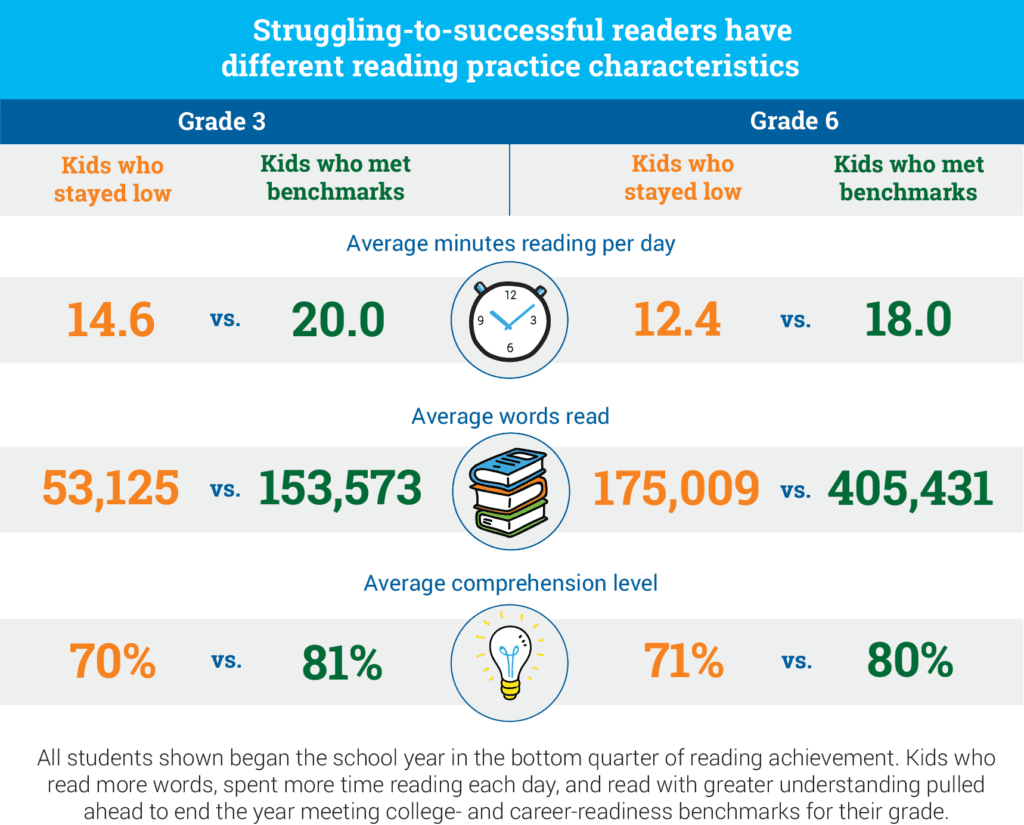
Source: Renaissance/6 More Minutes
2. 15 Minutes Per Day
An analysis of more than nine.9 million students plant that only those students who read 15 minutes or more per solar day made accelerated reading gains. Students who had less than xv minutes of daily engaged reading fourth dimension saw beneath-boilerplate reading gains, putting them at risk of falling backside their peers. Students who read between just over a half-hour and an hour per solar day saw the greatest gains of all.
3. 54 Pct of All Students
Worryingly, more than half of all students do not go enough daily reading practice. A mere 18 percentage of students read 30 minutes or more per twenty-four hour period, and another 28 percentage had 15 to 29 minutes of daily engaged reading time. The remainder—54 percent—read less than 15 minutes per day!
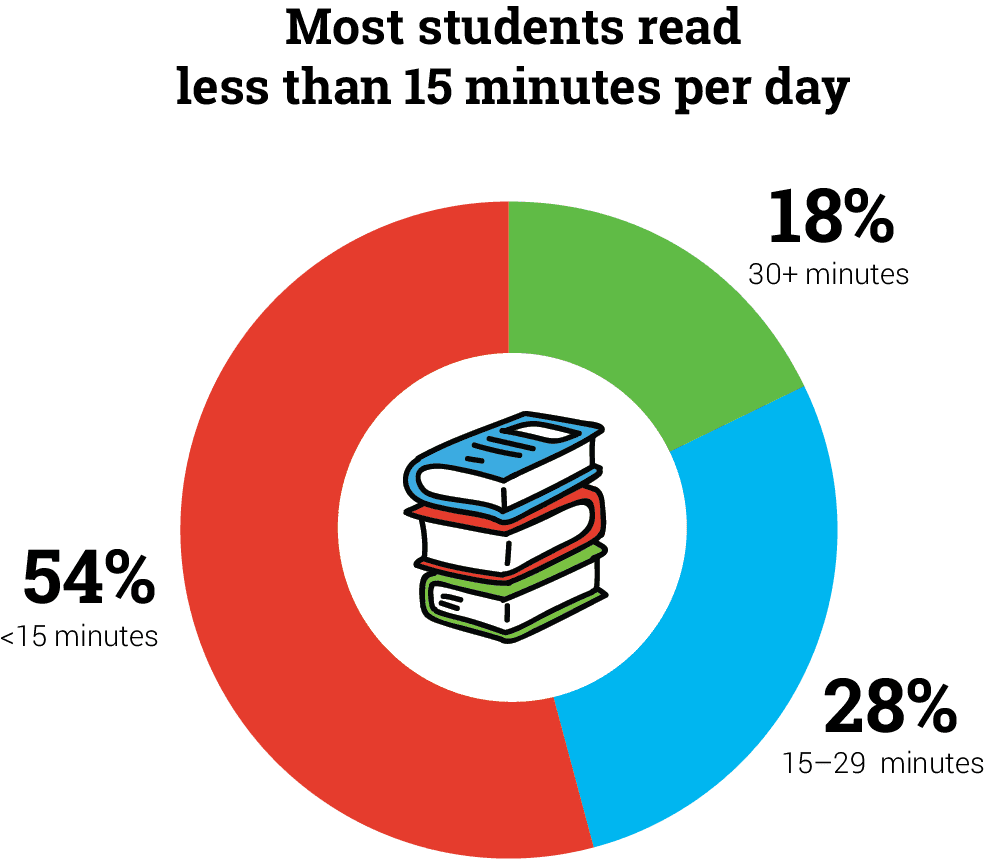
Source: Renaissance/15 Minutes Reading
four. 23 Percentage of 3rd Graders
In a longitudinal study of nearly 4,000 students, researchers found that nearly i in 4 students (23 percent) with "below-basic" reading skills in tertiary grade had not graduated high school by age 19. Among "proficient" third-grade readers, just 1 in 25 (4 percent) did not graduate. This means skillful third-grade readers were about five times more than probable to graduate high schoolhouse than their peers with below-basic-reading skills.
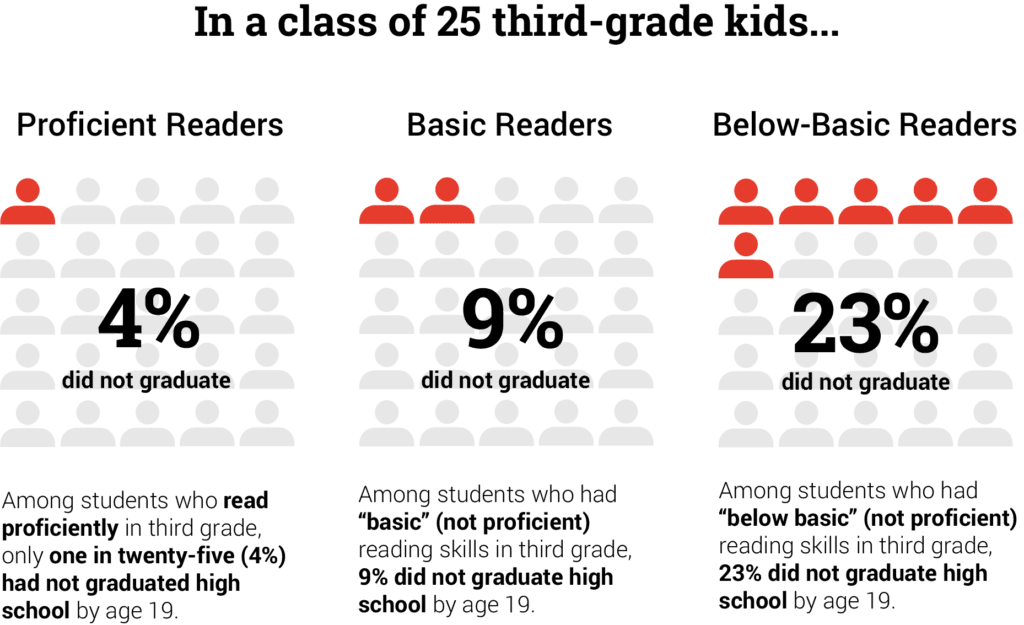
Source: Renaissance/23% of Third Graders
five. 82 Percent of Sixth Graders
In a longitudinal study of nearly 13,000 urban students, researchers found that 82 percent of 6th graders who had failed an English class did not get on to graduate from high school. Another half dozen per centum of those students who had failed English language in 6th class graduated belatedly, while merely 12 percent of those 6th graders who had failed an English course went on to graduate high school at all.
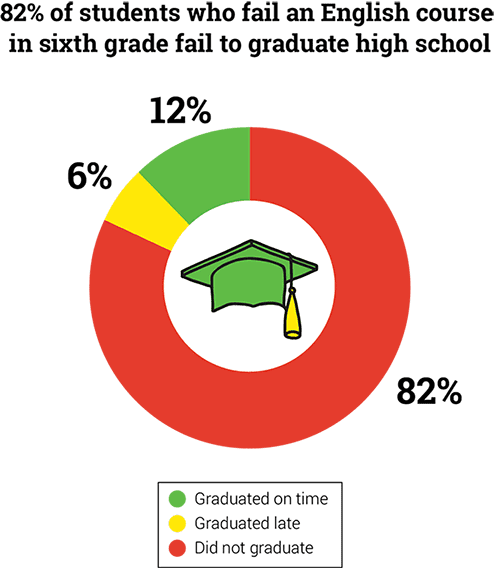
Source: Renaissance/82 Percent of 6th Graders
6. 30 Points
If you think reading practice doesn't matter for older students, think once more. NAEP results prove that students who read more than frequently have higher scores—and the score gap between frequent readers and infrequent readers gets bigger as students get older. Among nine-year-olds, there was just an 18-point departure between children who reported reading "never or inappreciably e'er" and those who read "most every day." Past age 13, the gap widened to 27 points. At age 17, information technology further increased to 30 points!
7. 13,700 Words
Some researchers gauge that children learn one new word for every i,000 words read. Between kindergarten and twelfth class, students with an average daily reading time of 30 or more than minutes are projected to meet 13.7 1000000 words—so they should learn around 13,700 new vocabulary words from independent reading practice alone . In contrast, students who read less than 15 minutes per solar day would learn but i,500 new vocabulary words from reading. That's a vocabulary gap of 12,200 words!
8. 35 Percent More Minutes
How tin can we encourage students to spend more time reading? Set personalized goals! A study of more than 4.2 million students found that students with personalized goals set as function of a research-based reading practice plan read 35 percent more minutes per day, read more difficult books, and had four% higher literal comprehension scores than students who used the aforementioned programme but without set goals.
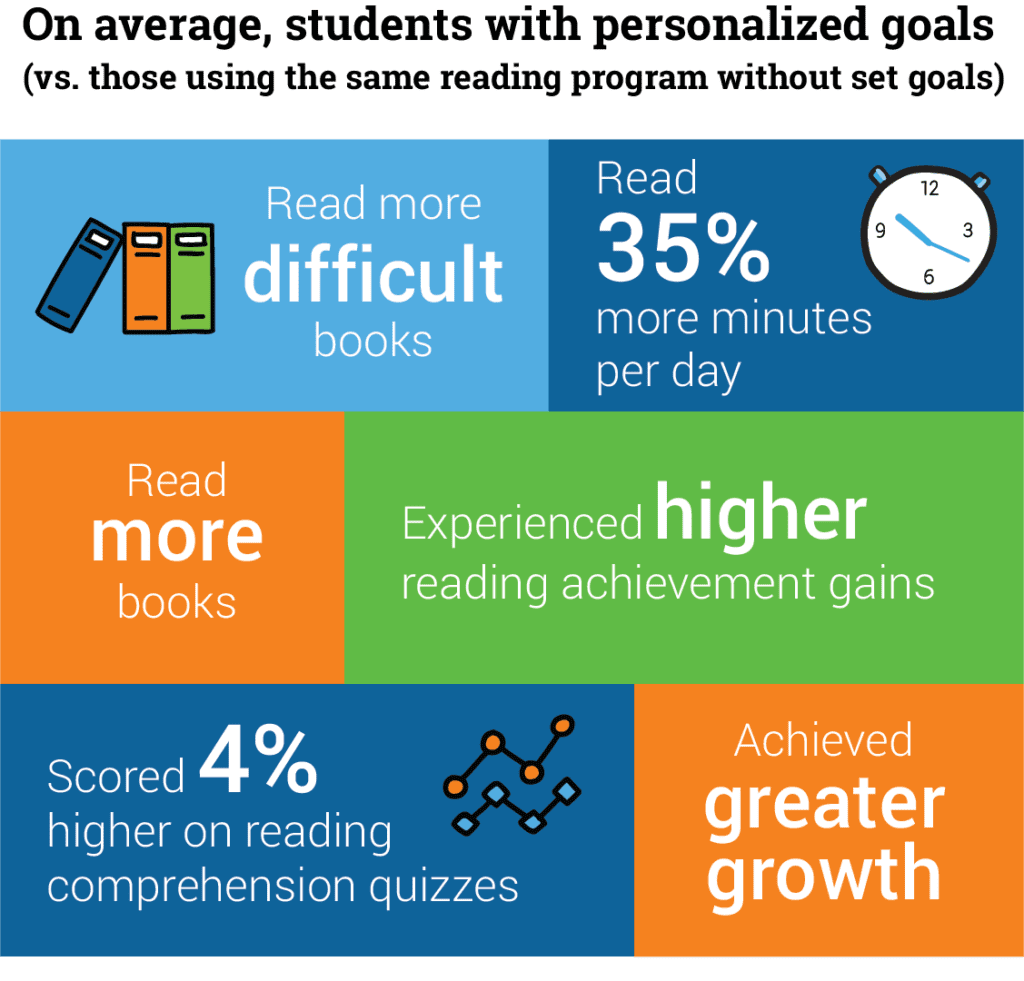 Source: Renaissance/35 Pct More Minutes
Source: Renaissance/35 Pct More Minutes
ix. 70 Pct Higher Math and Science Scores
Reading skill matters for more than but reading! Students in the meridian tercile (i.e., the top third) of reading skill answered 70 percentage more than math and science questions correctly than students in the bottom tercile, even on questions with low reading difficulty. The meridian readers answered 66 percent of these questions correctly, compared to only 39 percent correct for the bottom readers.
10. Nearly 2X College and Career Readiness
Students who get lots of high-quality reading do every mean solar day are much more likely to be higher and career prepare. A written report of 2.viii million students found that students who read 30 or more minutes per day with high comprehension (85 percent or higher) wereabout twice more probable than typical students to achieve the college and career readiness benchmarks for their form every bit typical students.
What Tin We Practise With These Numbers?
Of course struggling readers need loftier-quality teaching and intensive support in order to acquire essential reading skills. The data suggest they likewise demand time to practice applying those skills. What if nosotros fabricated a few additional minutes of daily reading practise a reality for all struggling readers? For all students? Could this assistance more students reach class-level goals? Graduate high school on time? Stay on track for college and career success? Imagine the possibilities!
Want More Insights into Struggling Readers and Reading Growth?
Download the free Education Leader'south Guide to Reading Growth to become even more research-driven insights to support the reading growth and achievement of all students at your school.
Source: https://www.weareteachers.com/staggering-statistics-about-struggling-readers-and-reading-growth/
0 Response to "How Much Reading Comprehension Growth Should a Special Ed Student Make in a Year's Time"
Publicar un comentario